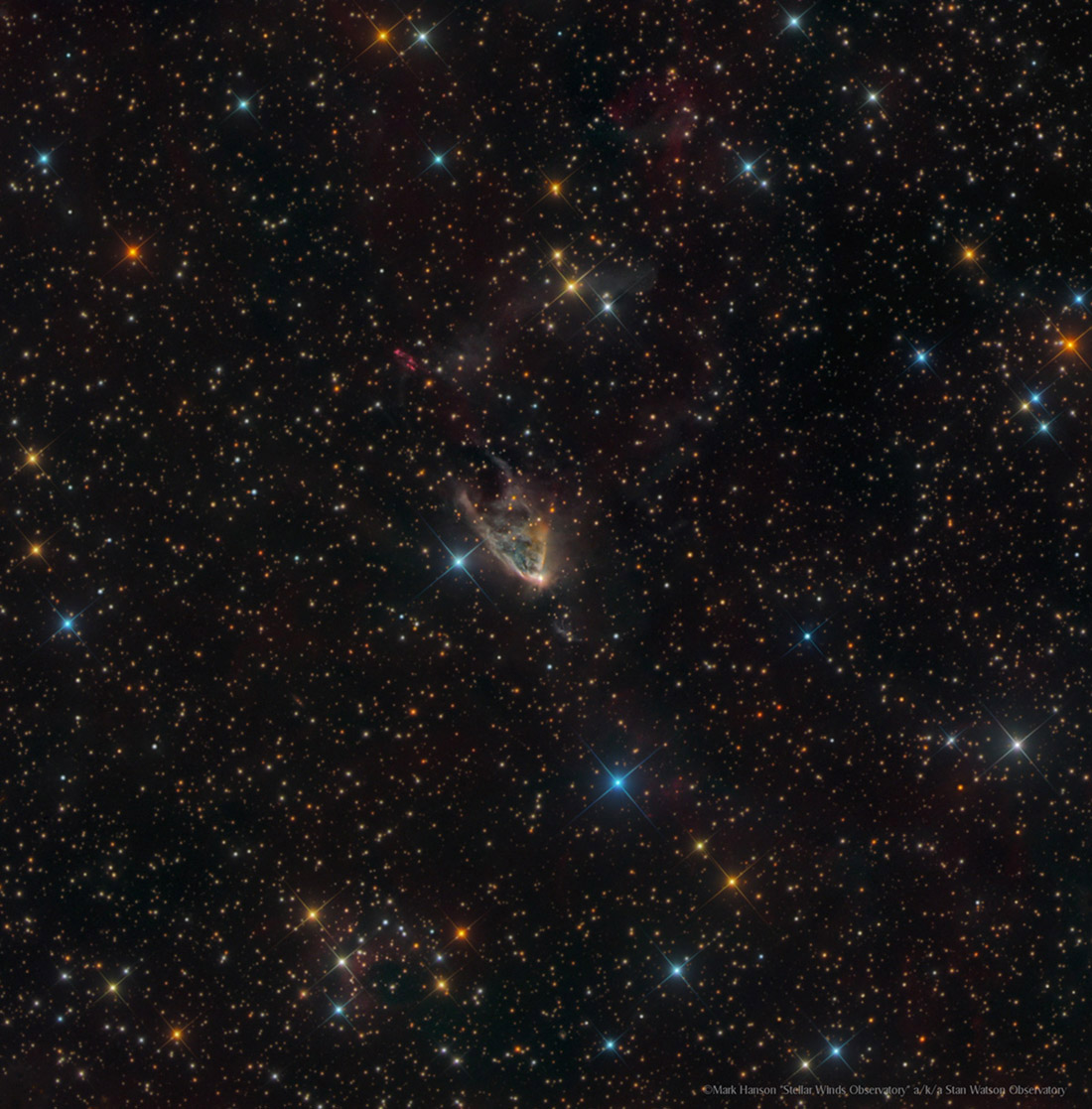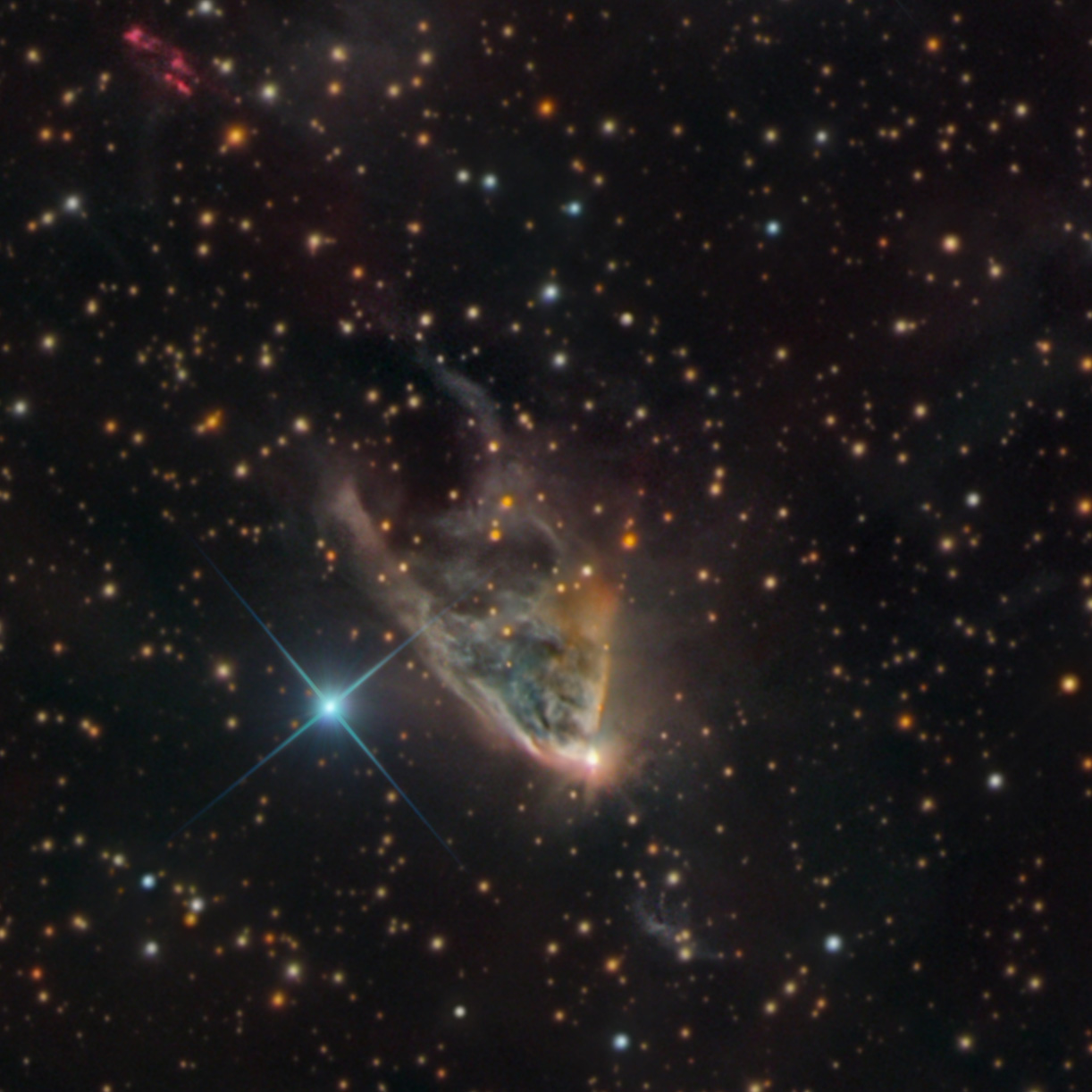Hubble's Variable Nebula - NGC 2261
Copyright Mark Hanson
Description by "Sakib Rasool"
"Like a cosmic flower, Hubble's Variable Nebula is a lovely reflection that appears to sprout from the bright star R Monocerotis. Otherwise catalogued as NGC 2261 by the astronomer John Louis Emil Dreyer in 1888 in his iconic New General Catalogue, this nebula was discovered in 1783 by William Herschel. It is also famous for the being the first deep sky object to have been photographed with the Hale Telescope at the Palomar Observatory in 1949 by none other than Edwin Hubble.
The popular name of this nebula arises from it being studied by Edwin Hubble in 1916 who noticed it changed in brightness. It is now known that its dramatic and quite quick changes in brightness and appearance are the result of opaque clouds of dust situated between the star and the nebula. The appearance of NGC 2261 has been observed to change on timescales of a few months if not a few days!
The reddish nebulosity visible to the north of NGC 2261 is an example of a Herbig Haro object, a type of jet ejected by a young star that glows by the energy generated by the gas colliding with its surrounding space. They were originally independently discovered by the astronomers George Herbig and Guillermo Haro. This Herbig Haro object is catalogued as HH 39 and more than a thousand are currently known. An analysis of the proper motion of the knots in HH 39 show that it is moving away from R Monocerotis and NGC 2261."
LRGBHa 300,180,180,180,450 Taken with a PlaneWave 24" CDK from Animas New Mexico.
Luminance 9 months apart with same telescope



